Bathroom walls are different from walls in other parts of the home. In living rooms, bedrooms, hallways, and other completely dry areas, any type of wall covering will work. In bathrooms, water comes from all directions. Moisture, both from direct tub and shower overspray and moisture-laden air, is often devastating for bathroom walls. Although bathroom vent fans do help, well-vented bathrooms can still have moisture issues.
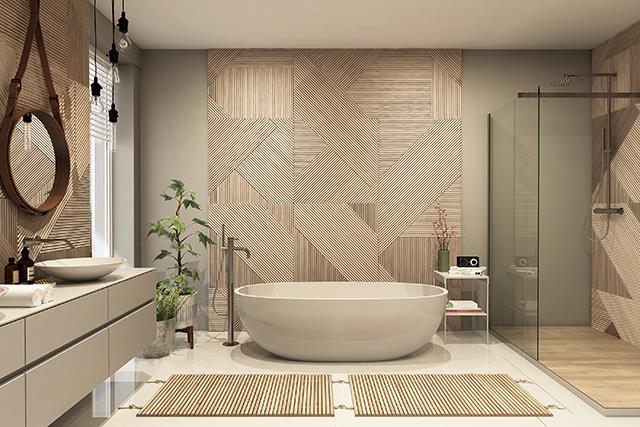
READ: Easy and affordable bathroom renovations
Tip
Whatever wall covering option you're drawn to, make sure it fits into the overall style of the home before committing.
Best materials for bathroom walls
Whether you're remodeling your bathroom or tackling a new build, the bathroom is always a high priority. As you're considering the best material for a bathroom wall, think about the daily wear and tear on a bathroom. It needs to be able to stand up to humidity and moisture, and it needs to be easily wiped down and cleaned. Water resistant properties are key.
Vinyl wallpaper

Vinyl-coated wallpaper is one of the better options for bathroom walls in terms of functionality (all-paper coverings will degrade in the moist environment).
Just be sure that your present wall surface can accept peelable vinyl wallpaper. Because it is less sticky than permanent wallpaper, peelable vinyl wallpaper will not stick to matte, flat, or rough surfaces. Also, vinyl wallpaper works best for indirect, ambient moisture. So use in conjunction with a surface that covers the lower section of the walls. There are, however, some vinyl wallpapers that will withstand direct contact from water, such as in a shower stall.
One benefit of vinyl wallpaper is that you can actually try it out before applying it. Buy a roll or a sample, then stick it up in the room. Large patterns will visually reduce the size of your bathroom. Verticals draw your eye upward and make the room feel taller. Horizontals seem to widen it.
Semi-Gloss bathroom or regular interior paint
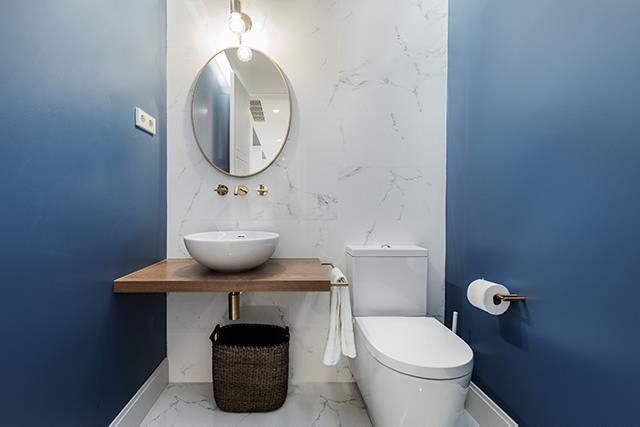
Bathroom paint is regular interior paint that has properties that make it better suited for bathrooms. With regular interior paint, the main thing to avoid is getting a flat or matte surface paint because the paint's pores trap water. A classic way to avoid this is to use semi-gloss or even a high gloss sheen; water beads up on these surfaces. But premium paints with mold-killing additives let you have those desirable flatter sheens in the bathroom.
The best thing about using paint for your bathroom walls is cost. Eggshell or semi-gloss interior paint is inexpensive. Even designated bathroom paint, which can cost up to twice the amount of regular acrylic-latex interior paint, is far cheaper than using wallpaper, tile, or other hard surfaces.
Ceramic or glass tile
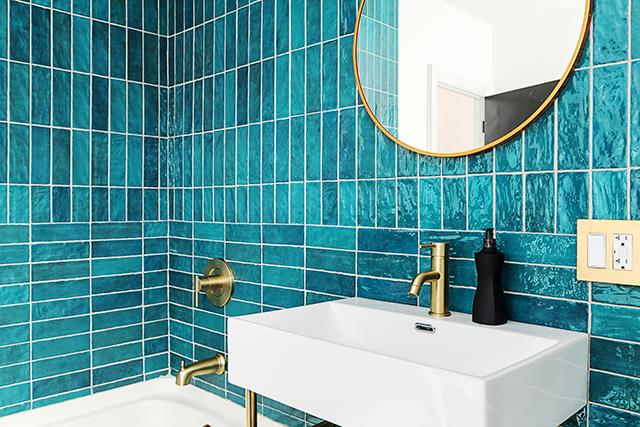
Ceramic tile is a classic choice for bathroom walls. With tile, as long as it is properly applied, moisture will never be a problem.
Design is your main consideration. All tile has grout, and grout means lines. Lines create patterns that can either enhance or detract from the bathroom's appearance. Too many tiles can make a room feel busy, ponderous, sterile, and even depressing. Partially tiling the wall is a good compromise.
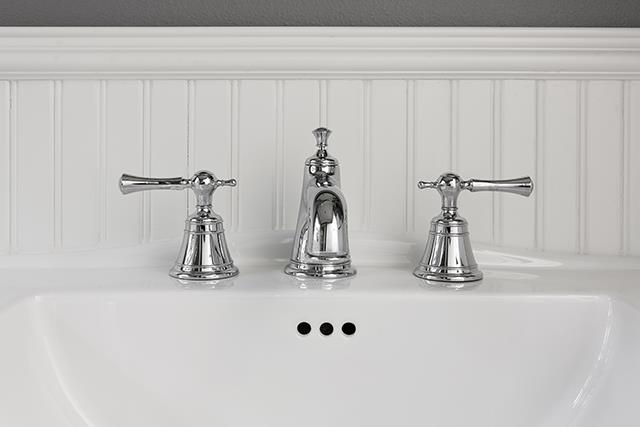
Beadboard provides only partial coverage for the wall: the lower half. But the lower section is the most important part when it comes to moisture problems. Beadboard can be painted with semi-gloss or glossy paint, which thoroughly protects the lower parts of the walls against moisture.
For easier installation, purchase panels of beadboard that are eight feet long by four feet high. Installed lengthwise, these long boards lay down quickly with construction glue and finish nails. For a more refined and historically accurate look, choose individual beadboard planks.
Beadboard gives your bathroom a classic look, which can be either an asset or a deficit. For traditionally styled bathrooms, beadboard fits right in. For modern bathrooms, beadboard is out of place and ungainly.
Tileboard
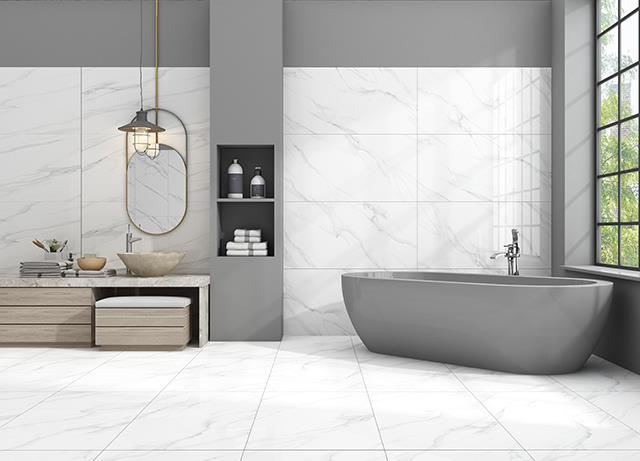
At first glance, tileboard looks like ceramic tile. Tileboard comes in large format panels.
Better tileboard looks closer to real ceramic tile and the wear surface is coated, so it repels moisture. Cheap and easy to install, tileboard is best used for a guest bathroom or basement bathroom due to its economical appearance. Tileboard is a bargain material that fixes wall problems quickly but adds little long-term value to your home.
One downside to tileboard is that it rapidly swells up and will not recover its original dimensions if water reaches the back of it. One way to avoid this problem is to keep all seams and edges caulked with bathroom-grade silicone caulk.
Maintaining your bathroom walls
Regardless of the material of your bathroom walls, keeping them clean is part of regular bathroom maintenance. Wipe them down regularly to keep dust and hair from accumulating, particularly in bathrooms that get extremely humid. Clean them whenever you deep clean your bathroom. Use a cleaning solution that is safe for your specific wall material to prevent mold from growing.
Home-Dzine suggests the following essential cleaning supplies
Before you get stuck into cleaning any room, you are going to need all the essential cleaning supplies:
- Spray bottle for white spirit vinegar
- White spirit vinegar, lemon juice, bicarbonate of soda
- Nail brush or small scrubbing brush
- Old toothbrush for tight spaces
- Sponge scourers, cleaning cloths including soft cloths for polishing
- Feather duster
- Stepladder
- Safety gear: dust mask and rubber gloves
Source (TheSpruce, Home-Dzine)
Want all the latest property news and curated hot property listings sent directly to your inbox? Register for Property24’s Hot Properties, Lifestyle and Weekly Property Trends newsletters or follow us on Twitter, Instagram or Facebook.








